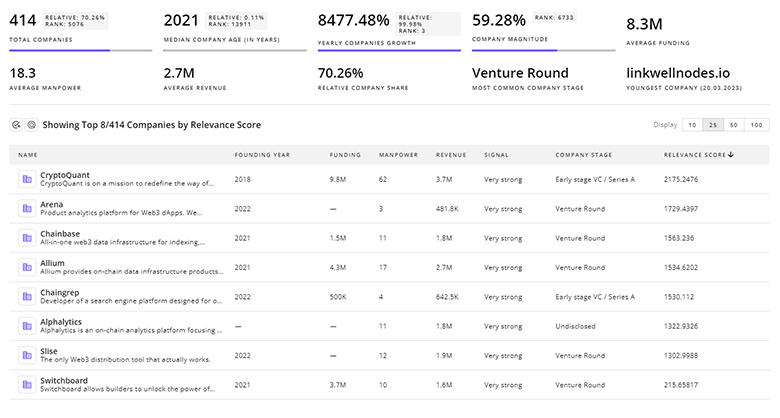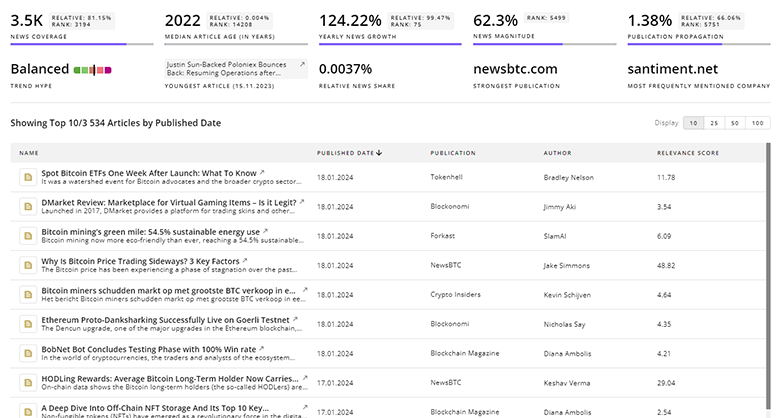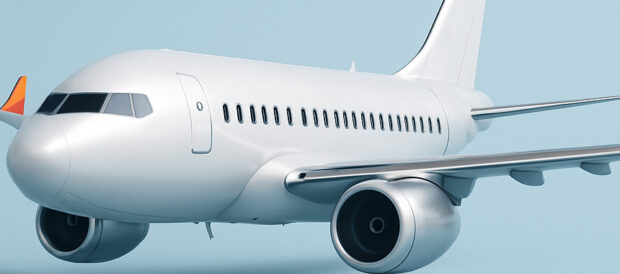
Flight Simulator Report
: Analysis on the Market, Trends, and TechnologiesThe flight simulator market sits at a strategic inflection point: it registered a market size of USD 5.8 billion in 2024 and, according to the internal trend data, is forecast to reach USD 9.5 billion by 2034 with a 5.1% CAGR — reflecting steady, capital-intensive expansion focused on accredited training and scalable virtual solutions. External market estimates align around mid-single digit CAGRs (4–7%) and place near-term market sizes in the USD 6–9 billion band depending on scope and year, while specialist segments (mixed/VR procedural trainers, UAV/eVTOL simulation) show double-digit growth rates in multiple analyst forecasts Flight Simulator Market Size and Share Analysis. The implications are threefold: incumbent FFS providers will protect high-value certification revenue, cloud/VR players will capture broader seat-scale demand, and AI + data analytics will shift value from hardware margins to recurring services and scenario content.
This article was last updated 42 days ago. If you find any info is missing, let us know!
Topic Dominance Index of Flight Simulator
The Dominance Index of Flight Simulator looks at the evolution of the sector through a combination of multiple data sources. We analyze the distribution of news articles that mention Flight Simulator, the timeline of newly founded companies working in this sector, and the share of voice within the global search data
Key Activities and Applications
Pilot initial qualification and recurrent training — High-fidelity full-flight simulators (FFS) and certified Flight Training Devices (FTD) remain the primary instruments for type ratings and regulatory recurrent checks; regulators (FAA/EASA) continue to anchor demand for Level D/Type-7-equivalent devices.
So what: Certification requirements sustain high price points and long replacement cycles, creating predictable service and upgrade revenue for certified OEMs and training centers.
Procedural, CRM and emergency scenario rehearsal — Mixed-/VR procedural trainers accelerate throughput for non-motion drills (flows, checklists, crew coordination), reducing expensive FFS hours.
So what: Training providers can scale student hours cheaply by combining certified FFS for critical events with high-volume VR for procedural skills.
Rotary-wing and specialized mission training — Helicopter and mission-specific simulators (offshore, HEMS, military) show rising installations aligned with defense and energy sector procurement Helicopter Simulator Market Size & Share Analysis (2024-2029).
So what: Niche OEMs and specialty integrators can command premium margins by addressing mission fidelity that generalist FFS makers do not prioritize.
UAV/operator and autonomy validation — UAV and eVTOL simulators for operator certification and autonomy testing grow faster than core FFS segments, reflecting commercial drone adoption and AAM development.
So what: Software-centric simulation platforms and cloud testbeds become strategic assets for OEMs and autonomy software vendors.
R&D, systems validation and accident reconstruction — Digital twins and recorded-data replay support aircraft development, systems validation and forensic analysis, expanding simulator use beyond training.
So what: This diversifies revenue streams toward consulting, scenario development and forensic services.
Emergent Trends and Core Insights
Shift to hybrid training stacks (FFS + VR + cloud) — Analysts report FFS retaining revenue share while virtual/mixed reality procedural trainers expand rapidly (~10%+ CAGR in several forecasts), creating two operational tiers of training.
So what: Training centers can increase throughput and reduce per-trainee costs by allocating tasks to the correct fidelity tier.
VR professional qualification gains regulatory acceptance — The first FAA qualification of a VR rotorcraft device signals regulator openness to qualified VR devices for certain training tasks A VR-Based Flight Simulator Has Been FAA Qualified For The First Time.
So what: This lowers capital barriers and creates a faster path to certified, lower-footprint training centers.
AI for adaptive scenarios, ATC interactions and debriefing analytics — Market and patent data show increasing investment in AI for scenario generation, virtual ATC and performance analytics.
So what: Providers that own high-quality scenario libraries and analytics will convert one-time simulator sales into subscription services and content marketplaces.
Modular, reconfigurable hardware and distributed architectures — Manufacturers pursue modular cockpits, roll-on/roll-off FFS concepts and distributed computing to shorten delivery cycles and support multi-type fleets.
So what: Modularity reduces TCO for operators and raises upgrade/retrofit service opportunities for vendors.
Regional divergence in adoption — North America leads absolute spend and certification demand, while Asia-Pacific shows the fastest installations and demand for virtual/low-cost solutions to match fleet growth Civil Aviation Flight Training And Simulation Market (2025-2030) Europe Flight Simulator Market Research Report.
So what: Market entry strategies should combine certified FFS offerings for mature markets with SaaS/VR footprint for rapid APAC scale.
Technologies and Methodologies
Six degrees of freedom (6-DOF) motion platforms and advanced haptics — Essential for Type-certified FFS to reproduce inertial cues and control forces; motion innovations (electric actuation, compact designs) reduce operating cost and maintenance cycles.
Significance: Motion fidelity retains premium value for high-stakes recurrent and upset recovery training.
High-fidelity visual systems, image generators and photogrammetry — 4K+/wide-FOV visual ecosystems and AI-augmented terrain generation improve environmental realism and reduce manual content creation time Microsoft Flight Simulator 2024 coverage.
Significance: Visual fidelity directly affects pilot perceptual training and regulatory acceptance of non-motion devices.
Virtual Reality headsets with pose-tracking and eye-tracking — Untethered VR systems provide low-footprint procedural training and can integrate biometric monitoring for cognitive load analysis.
Significance: VR reduces space and capex requirements while enabling remote and decentralized training.
Cloud streaming and edge rendering — Cloud-native image streaming and edge compute lower seat-costs, enable multi-site LVC (Live-Virtual-Constructive) training and permit rapid software updates Simulators Market Overview.
Significance: Shifts economics from capex to opex and allows training operators to scale geographically.
Digital twins, data capture and AI analytics — Integrated data capture for debriefing, performance baselining and adaptive curricula becomes core to demonstrating training ROI and competency tracking Global Flight Simulator Market 2023-2030.
Significance: Data products create recurring revenue streams and differentiate platforms beyond hardware fidelity.
High-level comparative market forecasts (select sources) | Source | Near-term market size (reported) | Forecast horizon / implied CAGR | |---|---:|---:| | Persistence Market Research — Flight Simulator Market Size, Share & Industry Trends, 2032 | US$7,168.6 million (2025) | US$10,882.8 million by 2032; CAGR 6.2% Flight Simulator Market Size, Share & Industry Trends, 2032 | | Precedence Research (web) — Flight Simulator Market to 2034 | US$9.31 billion (2024) | US$18.02 billion by 2034; CAGR 6.8% Flight Simulator Market Size to Hit USD 18.02 Billion by 2034 | | MarketsandMarkets — Flight Simulator Market | US$7.4 billion (2022) | US$10.3 billion by 2027; CAGR 6.9% Flight Simulator Market | | Internal trend data (conservative baseline) | US$5.8 billion (2024) | Forecast to US$9.5 billion by 2034; CAGR 5.1% |
Synthesis: analyst estimates differ by scope (consumer + professional vs civil/military FFS), but converge on steady mid-single digit growth for the full market and materially faster expansion for virtual/VR procedural segments and UAV/eVTOL simulation.
Flight Simulator Funding
A total of 145 Flight Simulator companies have received funding.
Overall, Flight Simulator companies have raised $12.7B.
Companies within the Flight Simulator domain have secured capital from 405 funding rounds.
The chart shows the funding trendline of Flight Simulator companies over the last 5 years
Flight Simulator Companies
Loft Dynamics — Loft Dynamics develops FAA- and EASA-qualified virtual reality flight training devices with a compact form factor, 6-DOF motion platform and panoramic VR visuals; the company highlights a cost and space profile substantially below legacy FFS and reports ~92 employees and Series-B scale financing history.
Why it matters: Loft's certified VR approach demonstrates that regulators will accept qualified VR for specific training tasks, opening an accessible pathway for smaller ATOs and regional operators.
TRC Simulators — TRC produces low-cost, instrument-accurate simulators (Cessna 172 family) with a pathway to motion integration; the firm emphasizes manufacturability, short lead times and EASA/FAA-compliant device options for ATOs.
Why it matters: TRC bridges the gap between consumer desktop setups and certified training hardware, enabling flight schools on constrained budgets to scale training capacity.
Visionary Training Resources (VTR) — VTR delivers untethered VR procedure trainers (FlightDeckToGo) designed to accelerate flows, checklists and crew-resource practice prior to full-motion simulator time; the company focuses on efficiency gains for airlines and cadet pipelines and reports multi-million revenue and growing customer traction.
Why it matters: Pre-FFS procedural training reduces expensive certified hours per pilot and improves retention of procedural skills across multi-crew operations.
SayIntentions.AI — A small AI startup building unscripted ATC, interactive cabin-crew and mentor AGENT modules that integrate with consumer simulators (MSFS/X-Plane) and pro platforms; products target both enthusiast realism and commercial training supplements.
Why it matters: AI content layers (unscripted ATC, adaptive debriefs) convert simulator time into measurable competency improvements and create content differentiation that is software-monetizable.
(Company descriptions and metrics are drawn from company profiles in the available company data sources cited above.)
Uncover actionable market insights on 1.8K companies driving Flight Simulator with TrendFeedr's Companies tool.

1.8K Flight Simulator Companies
Discover Flight Simulator Companies, their Funding, Manpower, Revenues, Stages, and much more
Flight Simulator Investors
Get ahead with your investment strategy with insights into 450 Flight Simulator investors. TrendFeedr’s investors tool is your go-to source for comprehensive analysis of investment activities and financial trends. The tool is tailored for navigating the investment world, offering insights for successful market positioning and partnerships within Flight Simulator.

450 Flight Simulator Investors
Discover Flight Simulator Investors, Funding Rounds, Invested Amounts, and Funding Growth
Flight Simulator News
TrendFeedr’s News feature offers access to 6.9K news articles on Flight Simulator. The tool provides up-to-date news on trends, technologies, and companies, enabling effective trend and sentiment tracking.

6.9K Flight Simulator News Articles
Discover Latest Flight Simulator Articles, News Magnitude, Publication Propagation, Yearly Growth, and Strongest Publications
Executive Summary
The flight simulator market presents a two-track commercial logic: certified full-flight systems retain high unit economics tied to regulatory training needs, while a fast-growing virtual/procedural layer reduces costs and scales seat-hours. Short-term decisions by operators will prioritize capacity and cost per trained pilot; medium-term winners will combine certified hardware credibility with software-first services (AI scenarios, analytics, cloud delivery) to capture recurring revenue. For investors and operators, the practical playbook is to (1) secure regulatory pathways for VR and modular devices, (2) own scenario and analytics content as a subscription product, and (3) pursue region-specific go-to-market models—FFS and defense capture in North America and Europe, and lightweight cloud + VR scale in Asia-Pacific where fleet growth outpaces training capacity.
Have expertise in trends or technology? Your input can enrich our content — consider collaborating with us!












